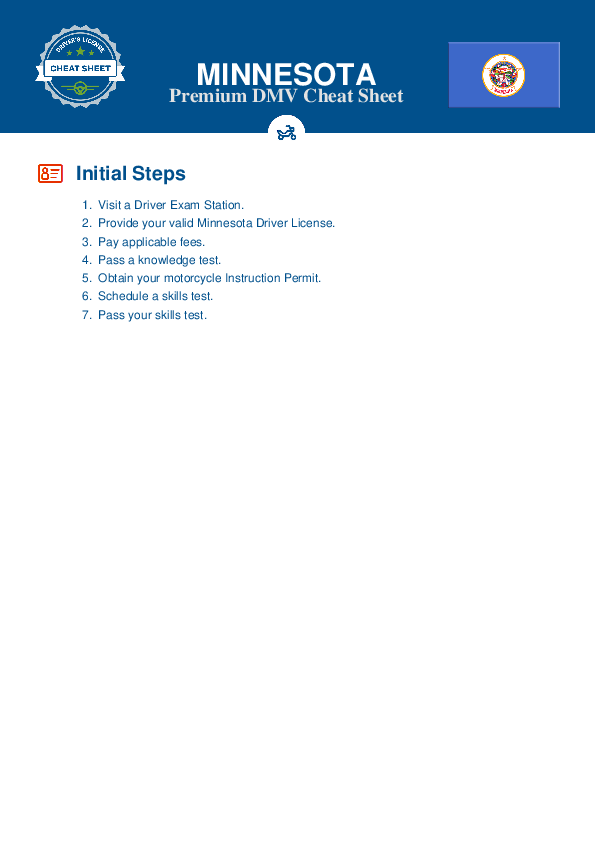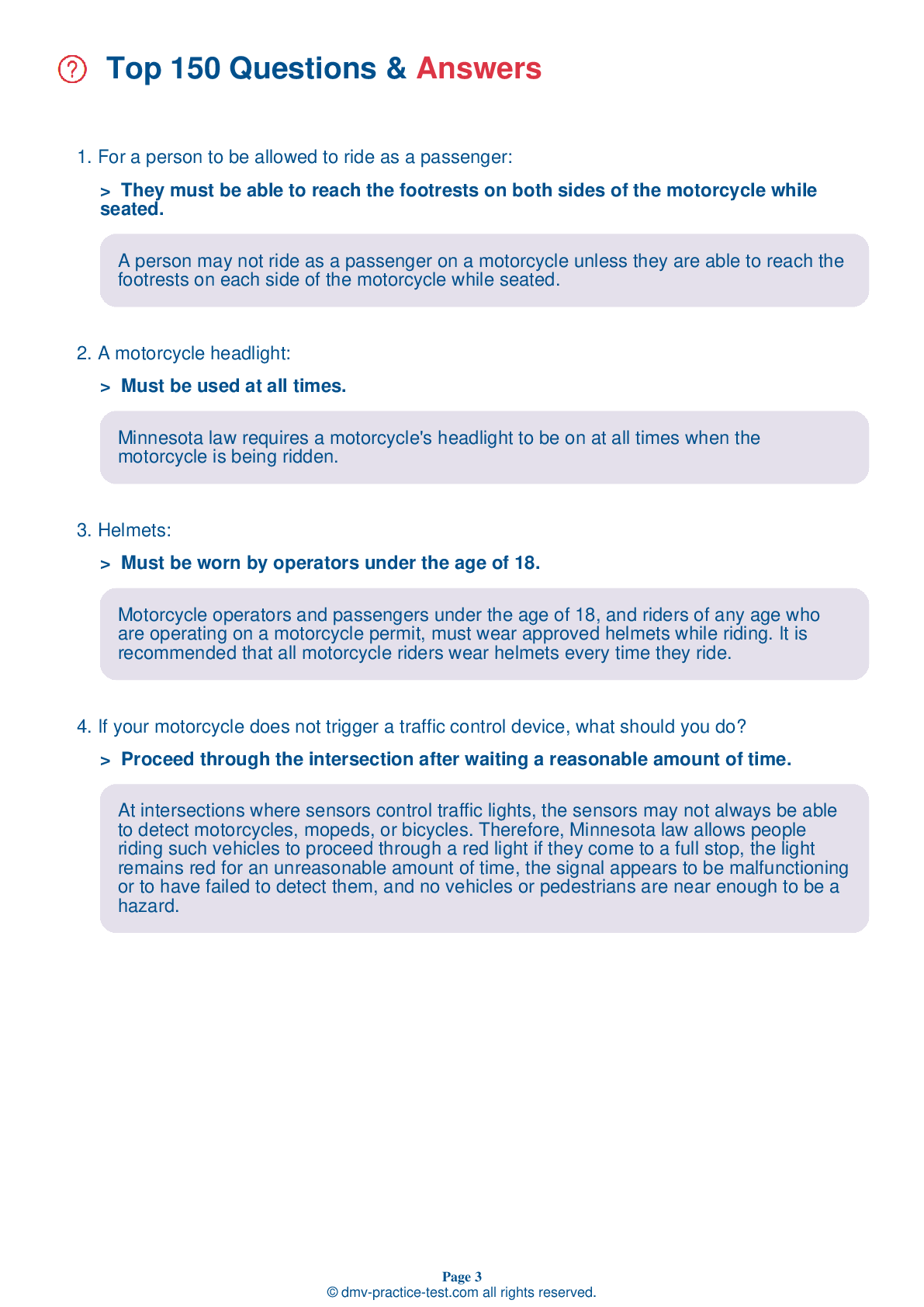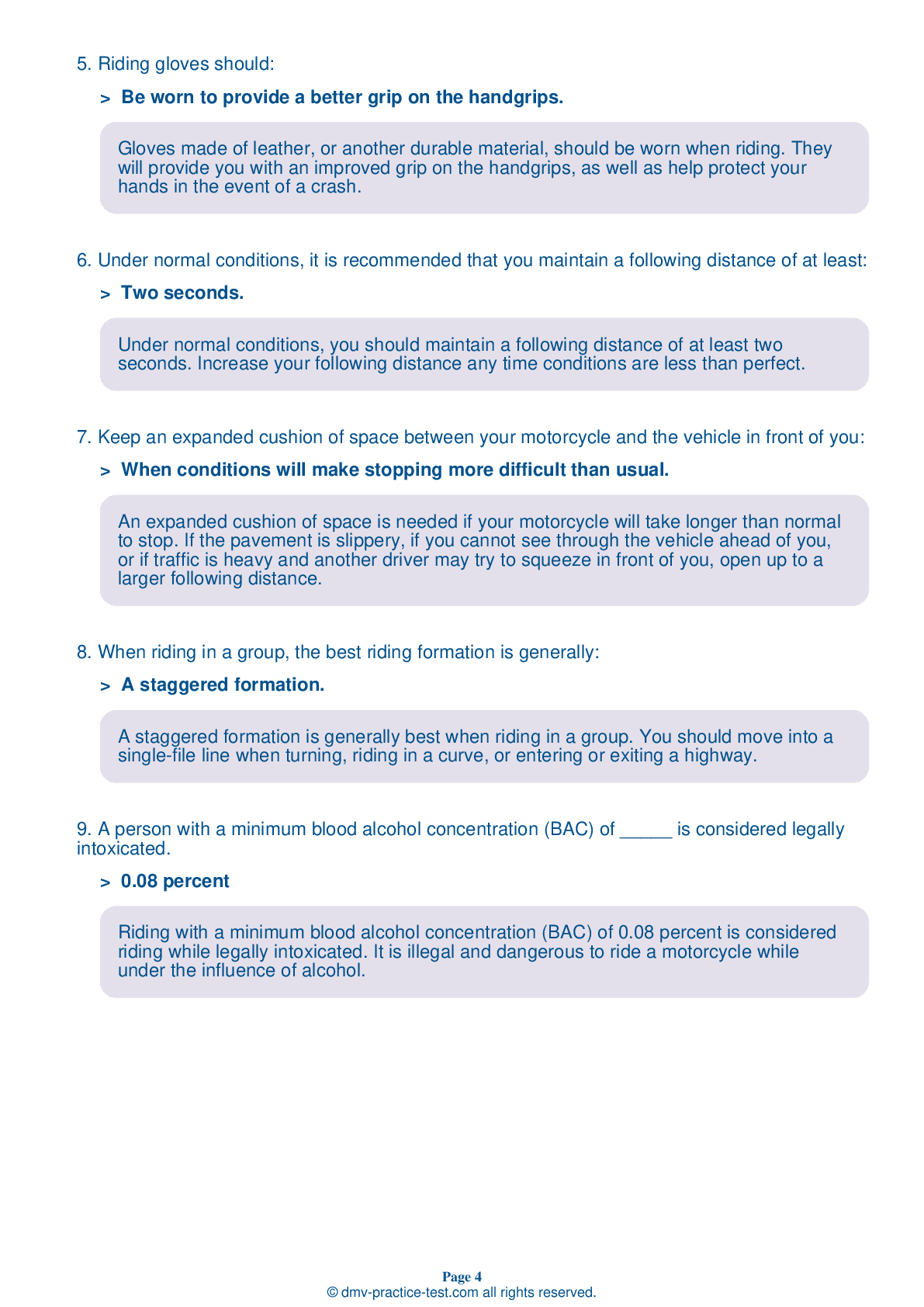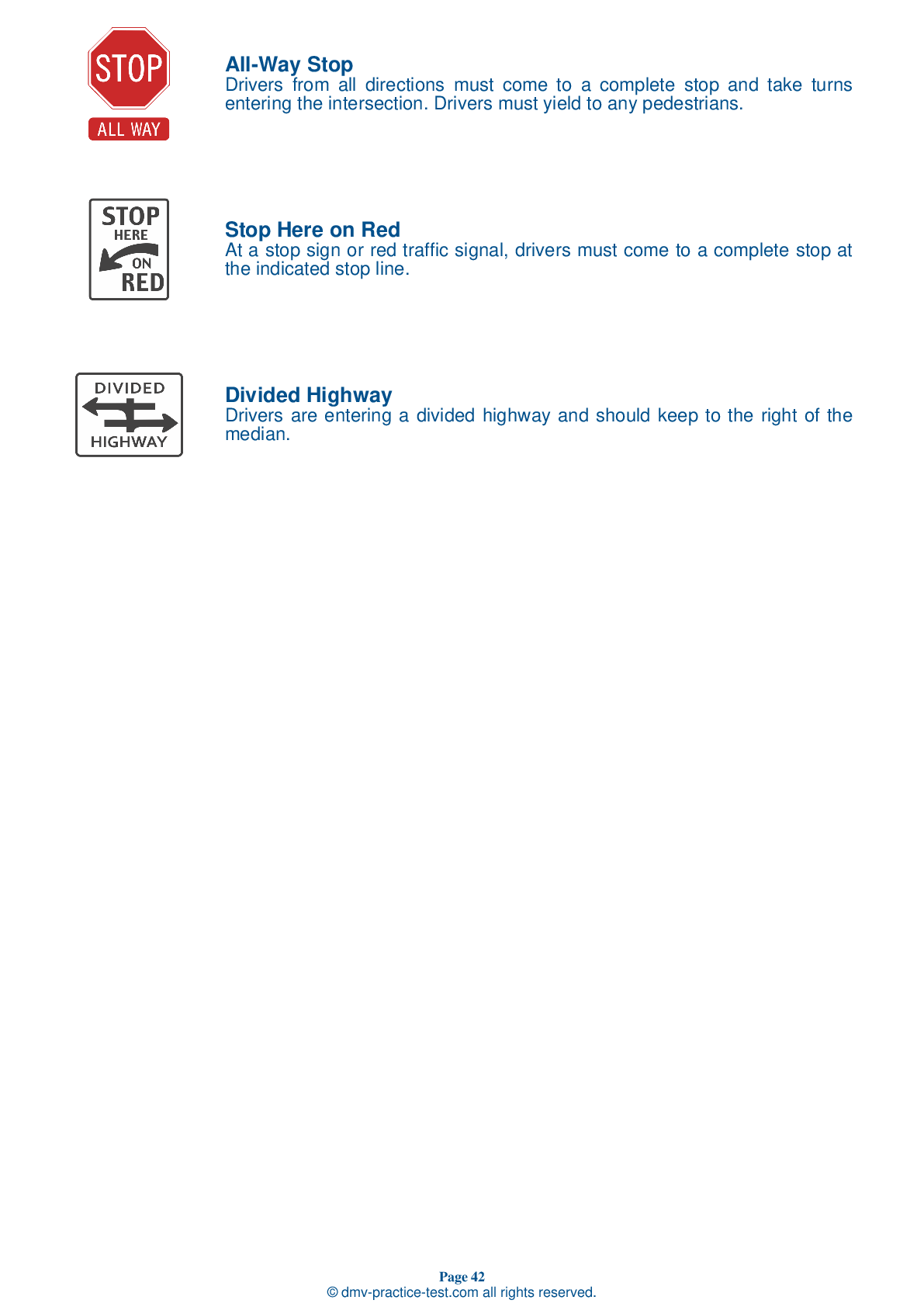Motorcycle Test | License MN 2025 | FREE Online Practice! #10 Page 3 of 5
Take this FREE motorcycle test (license in MN 2025) to check your knowledge of the road rules. To improve your results, download a motorcycle handbook online, study theory, and practice for free on our website. Still worried about how to get a motorcycle license in Minnesota in 2025? Check our website for more sample tests, train as much as possible, and boost your grades!
17 . Which of the following is not considered protective eye wear?
Even if a motorcycle has a windscreen, riders are required to wear protective eyewear, such as appropriate glasses, goggles, or face shields. Contact lenses do not satisfy this requirement.
18 . Which of the following is a good color to wear to be seen?
Orange, red, yellow, or green clothing can make you easier to see while riding a motorcycle. Wear brightly-colored clothing no matter what time of day you are riding.
19 . If wearing footwear with laces, the laces:
When riding, you should securely tuck in the laces of your footwear so that they will not catch on your motorcycle.
20 . You should increase your following distance if:
An expanded cushion of space is needed if your motorcycle will take longer than normal to stop. If the pavement is slippery, if you cannot see through the vehicle ahead of you, or if traffic is heavy and another driver may try to squeeze in front of you, open up to a larger following distance.
21 . Before riding, check all of the following, except:
Before every ride, be sure to check your tires' inflation pressure, your tires' treadwear, and the general condition of the sidewalls and tread surface on the tires.
22 . When planning a long group ride, which of the following ideas should not be implemented?
When riding in a group, the length of a route and the lengths of segments of travel should be based on the skill level of the least experienced rider. Groups of riders should take regular breaks to reduce fatigue. Inexperienced riders should be placed behind the leader so more experienced riders can keep an eye on them from behind. It is generally best to ride in a staggered formation.
23 . If you are feeling tired while riding, you should:
You should avoid riding if you are tired. When making a long trip, take rest breaks at least every two hours to reduce the risk of becoming fatigued.
24 . When a group of riders is passing another vehicle on a two-lane road, the riders should:
On a two-lane road, a group of motorcyclists should pass one at a time. Each motorcyclist should complete the pass before another begins to pass.
See the exact questions that will be on the 2025 Minnesota DMV exam.
99.2% of people who use the cheat sheet pass the FIRST TIME
Jeneen was tired of paying $5/gallon. She got herself a scooter that required the motorcycle license. She studyed the motorcycle test cheat sheet and passed her test the next day!
Christopher tells us how he knew nothing prior to obtaining the motorcycle study guide, and he only got one question wrong because he clicked on the wrong answer by mistake.



